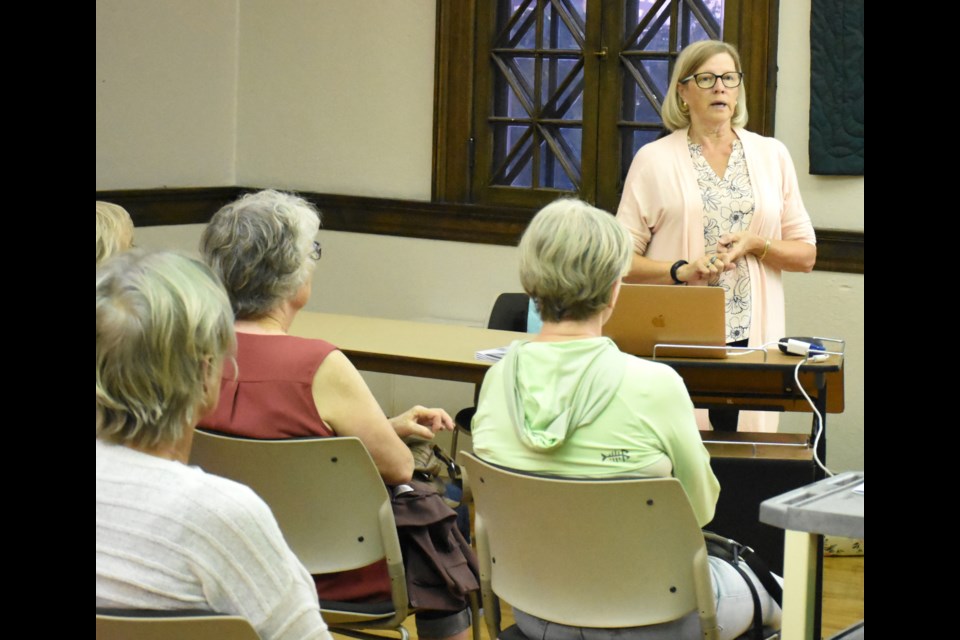MOOSE JAW - When the federal government authorized the construction of thousands of wartime homes during the Second World War, it thought they would be temporary and would be replaced with better-quality structures.
More than 80 years later, however, due to regular maintenance and care, many such buildings are still standing throughout Canada — including in Moose Jaw — and giving thousands of people a home.
In fact, Moose Javian James (Jim) H. Hunter, an engineering sergeant, was the first Canadian war vet to purchase and own a wartime home under Ottawa’s sell-off plan.
Hunter, who worked for Patterson Motors, which also employed Victoria Cross winner David Currie, purchased 129 Lillooet Street East — across the street from his mother — in March 1946 and lived there with his wife, Gladys (née Bell), and son Tommy, 5.
“He likes his home very much and is quite satisfied with the deal, which is making him the first veteran owner of a serviceman’s wartime home in the dominion,” the Times-Herald reported.
To acknowledge these homes’ histories and the people who lived in them, the city’s heritage advisory committee hosted a discussion at the Moose Jaw Public Library recently as part of its efforts to commemorate the 80th anniversary of the end of the Second World War.
Wartime homes were needed during the Second World War because of government policies from the First World War, including the Soldiers’ Settlement Act in 1919, which offered returning members low-interest loans to purchase land, stock and equipment, explained Janie Fries, the committee’s vice-chair.
This led to a mini housing boom in Moose Jaw in the 1920s, but after the October 1929 stock market crash and the 1930s’ Great Depression, there was turmoil everywhere that negatively affected families and housing, she continued.
Fries recalled that her grandfather lost his job in 1932 and moved in with his brother and family.
The arrival of the Second World War on Sept. 1, 1939, made the housing situation worse because there was overcrowding and multiple families living together, Fries said. This “doubling up” was difficult because some families had six to 10 children each.
Furthermore, during the war’s early years, there was a lack of supplies and skilled labour because of the Great Depression, while existing stock had deteriorated drastically, she continued. In Moose Jaw, many homes did not have electricity, sewer or water utilities, while few were painted.
“I can remember as a kid, I grew up on Francis Street and there were a few outhouses in the alley,” Fries said.
The federal Liberal government did not want to become involved in constructing homes and wanted the private sector to handle that, but it was dragged into the matter regardless, the vice-chair said.
There was limited wartime housing in 1941 when Ottawa invoked the War Measures Act, but in 1942, the Wartime Prices and Trade Board was established and worked with 29 Canadian communities to establish housing registries listing spare accommodations — like low-quality basements or unfinished attics — and invite applicants to apply.
Furthermore, the Veterans’ Land Act financially assisted vets to help with land and housing purchases.
Ottawa established the home conversion plan in 1943 to lease, convert and sublet available buildings, and in 1946 and ’47, the three housing-focused organizations combined to form the Central Mortgage and Housing Corporation (CMHC).
Fries showed a video from the National Film Board about housing during the war.
The film noted that it took workers 36 hours to erect a wartime home — the walls were prefabricated — and assemble them on serviced lots, homes were built in batches of 200, 500 and 1,000, and there were four external styles with 12 internal designs — a Moose Jaw-born, Toronto-based architect developed the designs.
While the homes met families’ needs, the structures had no basements, so some homeowners built 10-foot by 10-foot back porches or modified attics for storage.
“… These (homes) were to be temporary, and after the war, they were to be removed and more substantial houses built. Well, with good maintenance, we’ve seen a number of them (that) have withstood the test of time,” Fries said, noting people criticized Ottawa for selling off the homes because few had money for down payments.
While some communities had entire neighbourhoods of wartime homes, Moose Jaw’s were constructed on infill sites, she continued. While her team counted 366 wartime homes — she initially thought there were 150 — they believe there are more.
“We need to take pride in all of the history in our city and not just what people think is the glamour of it,” she added. “We all have a part to play … no matter how big or how small (the heritage home or building is).”
Jessica McNaughton, co-founder and CEO of memoryKPR, an online program similar to a time capsule, then spoke about how her company is helping the committee save the history of these homes and their former owners.




